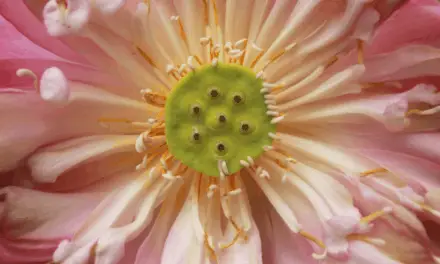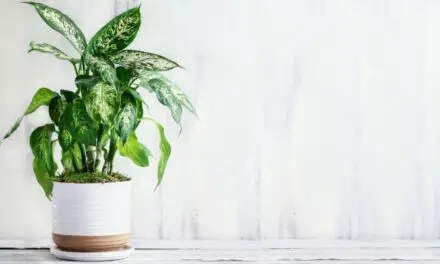These beautiful bushes are very popular and have fragrant flowers that brighten up any spring, but some people find that they are invasive and take over – and removing them can be a challenge.
Anyone who has lilac bushes in their garden might look at them and wonder how they manage to spread so effectively.
Table of Contents
How Do Lilac Bushes Spread?

Lilac bushes spread through their seeds, but they also use suckers to produce new plants that sprout up into the soil.
A single sucker can become a whole new bush, and any pieces of root that get left in the ground when you remove the plant can also spread into new bushes.
How Lilacs Bushes Spread Via Seeds
Lilacs usually flower for two or three weeks during the spring, and then they produce small brown pods of seeds.
These have a protective casing that covers the many little seeds inside them.
They will usually sit on the branch for a while and dry before the pods split open.
They do this in a very sudden springing motion, dispersing the seeds widely around the plants and flinging them in every direction.
Related Article: Why Is My Lilac Bush Blooming in the Fall? (Explained)
How To Stop Lilac Bushes Spreading By Seed
Lilacs don’t depend on animals, birds, or insects to distribute their seeds, so if you want to prevent lilacs from spreading, you will need to remove the seeds before the pods open.
You can do this by taking dead flower heads off the plant before the pods have formed, or by removing the pods before they have had a chance to dry and open.
How Lilacs Spread Via Suckers
Many people grow lilac plants from suckers, and suckers are a major reproduction method for the plants.
The bushes send shoots up from their root networks, and these shoots reach up toward the surface of the soil.
When they reach the surface, they grow into a new bush, so lilacs can easily create a great many lilac bushes in their vicinity even without flowering.
This is great if you want a lilac grove in your garden, but can prove quite annoying if you don’t.
Dealing With Lilac Bush Suckers
You can cut off suckers whenever you see them coming up through the soil, although they will often simply keep sprouting.
Suckers might appear a surprising distance from the main plant, so it’s a good idea to learn how to distinguish them so you can remove them if necessary.
If you want to stop the suckers from regrowing, you should dig down into the soil and pull the suckers out rather than cutting them at surface level, because of how they regrow from roots.
Growing A Lilac Bush From A Shoot
If you want to grow a new lilac bush, you can dig up a shoot, making sure that you get some of the root section.
Cut this off with the root intact, and then plant the shoot somewhere else to allow it to grow.
Keeping on top of lilacs can be a challenge, and if they start taking over, you may find it necessary to remove entire bushes to stop them from spreading.
You should water the ground to help loosen the soil and then drag the plants up by their roots, keeping the roots as intact as possible.
How Lilacs Spread Via Roots
One of the things that make lilacs difficult to deal with is that a piece of root can sprout again and again.
Lilacs are hardy, and if you cut them back to the ground level, they will simply regrow from the remaining rootstock.
If the roots tear while you are pulling the plant out of the soil, you will have to remove all the pieces of root if you don’t want the lilac to regrow.
Leaving little pieces in the soil will probably result in new bushes appearing before too long.
If you have recently cleared an area of lilac bushes, keep an eye on the area for new sprouts, so you can remove them promptly if necessary.
You may need to keep pulling up sprouted lilacs for quite some time, especially if you have removed several lilac bushes.
Don’t put lilac bushes or cuttings on your compost heap; they are likely to sprout. It is better to burn cuttings and use the ash instead.
Graft Your Lilac Bush On To Privet
Many Lilacs that are sold nowadays are grafted on to privet to stop them from spreading.
So if you’re thinking of planting a lilac bush in your garden, graft it onto privet roots first and then chop it down when you want it gone and it won’t send up roots.
The Easiest Way To Pull A Lilac Bush Out Of The Ground
You can use a farm jack to pull your lilac bush out of the ground with minimum effort.
You can pick these up online or at any larger hardware store; just try to get a farm jack that has a capacity of at least 7,000 lbs. and a minimum height of at least 6 inches.
To begin, you’ll need a hook secured to one side of your jack and you’ll need a length of chain with another hook on it (about 15 or 20 feet).
You’ll also need something for the jack to push down on so that it doesn’t sink into the soil.
A piece of wood or flat stone should do fine.
Step 1.
Wrap the chain tight around the base of your lilac bush and secure it with the hook.
Step 2.
Put the flat stone or piece of wood down right next to the bush and place the jack down on it.
You may need to adjust the jack so that it is lifted up a few inches and ready to put pressure on the tree.
Step 3.
Secure the chain that’s wrapped around a tree to the jack and make sure it’s all pulled tight so that when you begin to jack it up you will feel resistance immediately.
Step 4
Once everything is secured and tight, pump the jack and the bush will begin to lift out of the soil – roots and all.
It will take some effort but continue jacking until the whole root system has been pulled out of the ground.
To maybe one or two roots refusing to release their grip on the soil.
You can cut those with a saw and loosen them and pull them out afterward.
Conclusion
Lilac bushes are beautiful and very hardy plants.
That’s great news if you want them growing everywhere, and not so good if you want to get rid of them.
Think carefully before planting lilacs and be aware of how easily they spread, and how tricky they can be to get rid of!
Lilacs spread via seeds and suckers, but can easily regrow from their old roots, so they certainly aren’t hard plants to keep in your garden.




